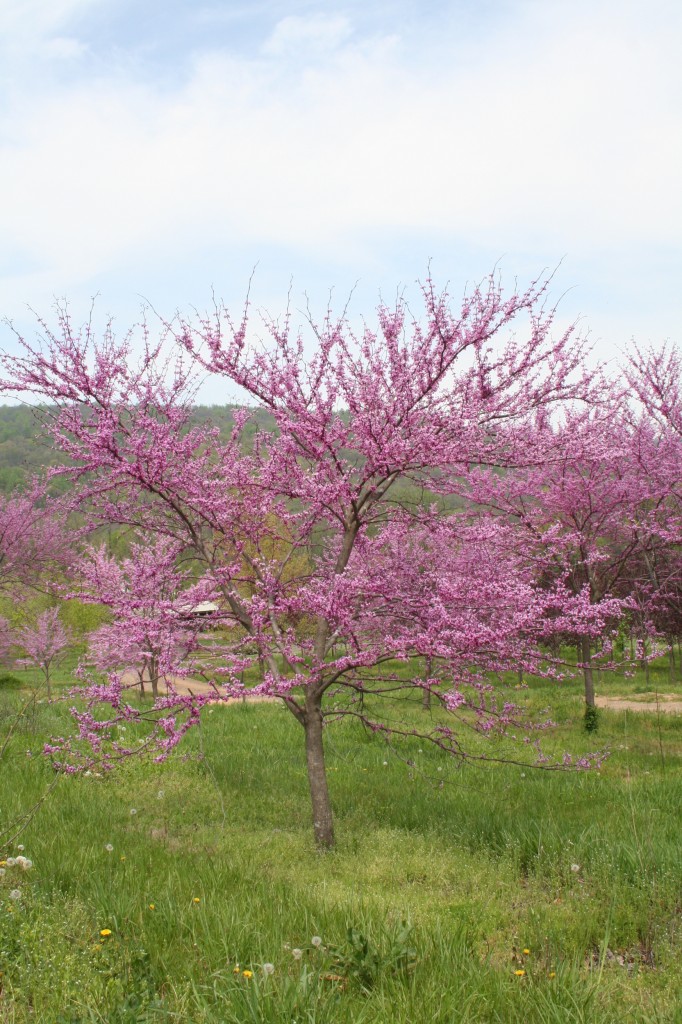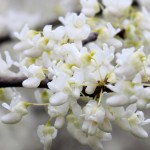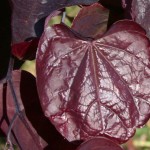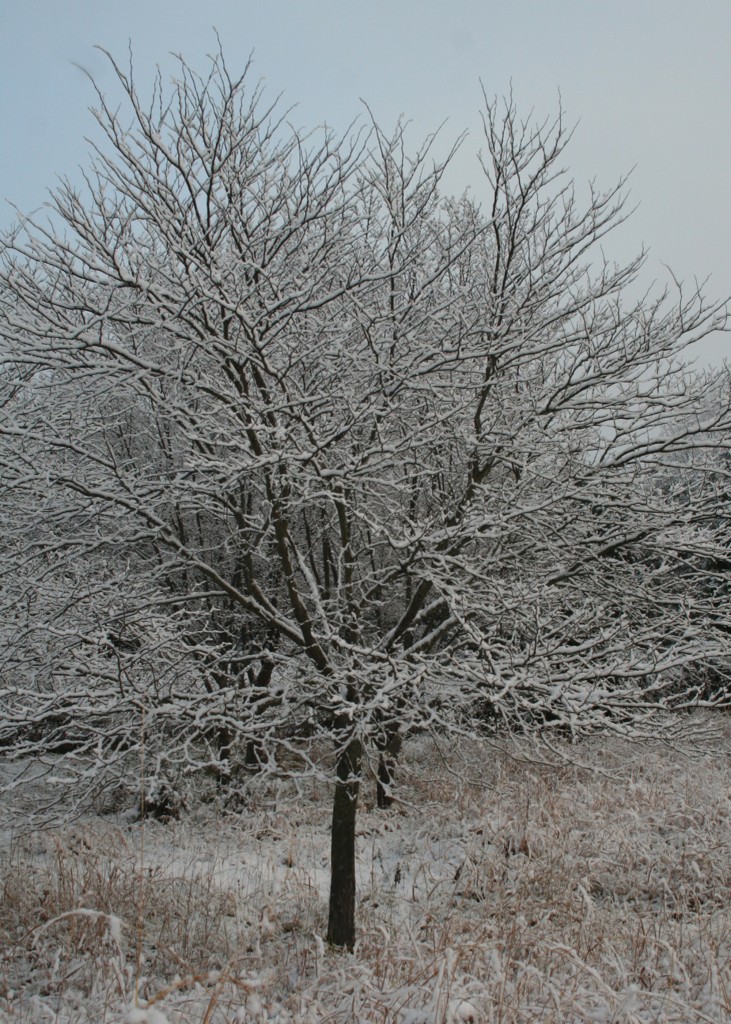
Cercis canadensis, Redbud
By Cecilia Palmer
The cheerful pink flowers of our native Redbud announce spring in style. They are often seen in drifts along woodland edges or sprinkled under the canopy of an older forest. Redbuds are beautiful, easy to grow small flowering trees and make wonderful additions to the home landscape.
Redbuds have fantastic foliage interest which carries their season of interest into the summer. Their attractive and unique heart shaped leaves are captivating. For those who like colorful foliage, breeders have had fun creating some wonderful new cultivars. Some of the popular selections include “Floating Clouds”, a white variegated form, “Rising Sun” a brilliant yellow and orange foliage form; and “Forest Pansy” which has shimmering iridescent purple foliage. In autumn the leaves on most selections turn a beautiful yellow color and in winter the dark bark and attractive structure creates interest.
“Redbud is a highly prized landscape plant, whether grown as a single specimen, in groups, or as scattered understory trees in a woodland garden. The trees are spectacular in bloom, and named selections offer a varied palate of colors from red/purple to white.” says the Virginia Native Plant Society. The Society named the redbud as the 2013 Virginia Wildflower of the Year and is a great source for more information about this wonderful tree.
The redbud is an extremely versatile tree which can be placed in a variety of landscape settings. Great for use in a foundation landscape next to the home, a lawn specimen tree or grouping, and as a massed tree along the edges of a woodland to add color and depth.
They are probably most often used in a naturalistic or traditional landscape setting, but, their use is certainly not limited to these. The brightly colored foliage cultivars would bring color and add a special WOW factor to a modern style landscape settings.
The redbud can be planted either spring or fall and will grow best in moist, well drained, deep soils. It is extremely adaptable though and will do well in many less than ideal conditions. Do not place it in soils that stay waterlogged or in an area where an irrigation system maintains a very high soil moisture level.
It does well with being planted in either spring, fall or winter and can be placed in either partially shaded or full sun locations. Special attention to ensure the tree does not become stressed during droughts will keep the tree healthy and reduce the risk of disease and insect damage.
Here are a few of the cultivars we have available as large landscape size specimens. There are several other selections which would also be available as smaller trees.



Key feature: Year Round Interest

Plant type: Tree
Deciduous/evergreen: DeciduousGarden styles: Natural, modern, traditional
Cold hardiness zones: 4 to 9
Light needs: Partial to full sun
Water Needs: Requires regular watering during establishment. Cannot tolerate soggy soils. When established, water during summer droughts.
Average landscape size: 20 – 30’ tall, Spread 25 – 35’
Growth habit: Rounded
Special features: Flowers, foliage, bark
Landscape uses: Specimen tree, massed natural understory
Flower color: Pink, deep pink, white
Blooms: Early Spring
Foliage color: Green, selections with purple, yellow/orange and white variegated foliage